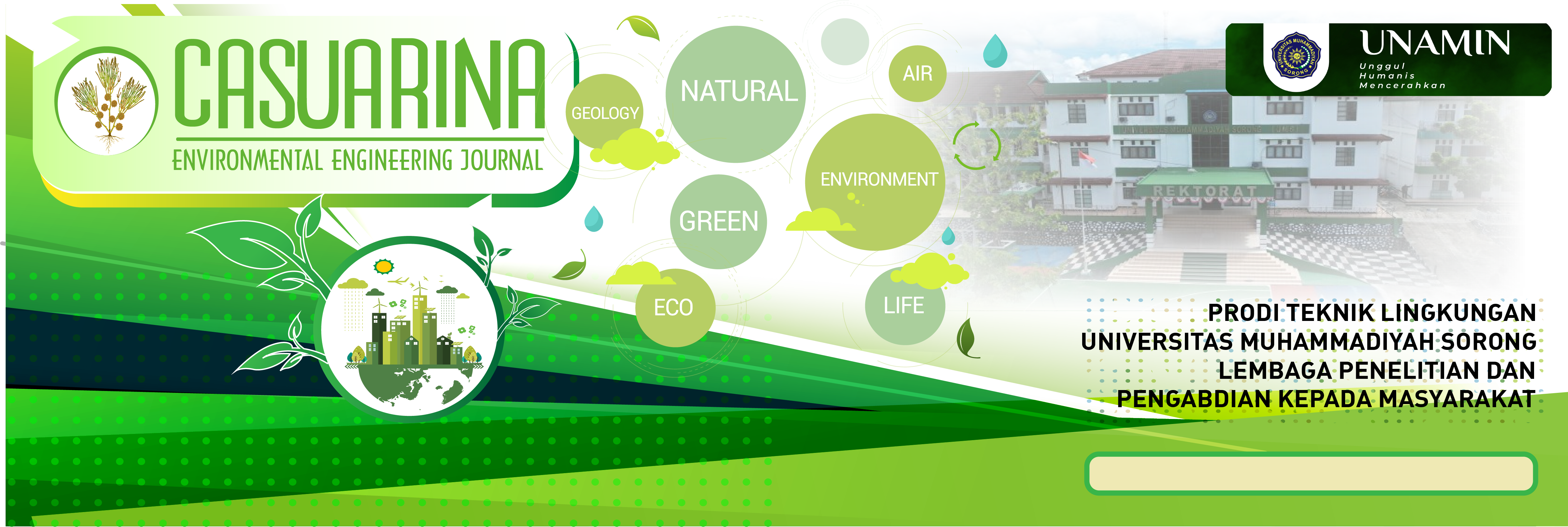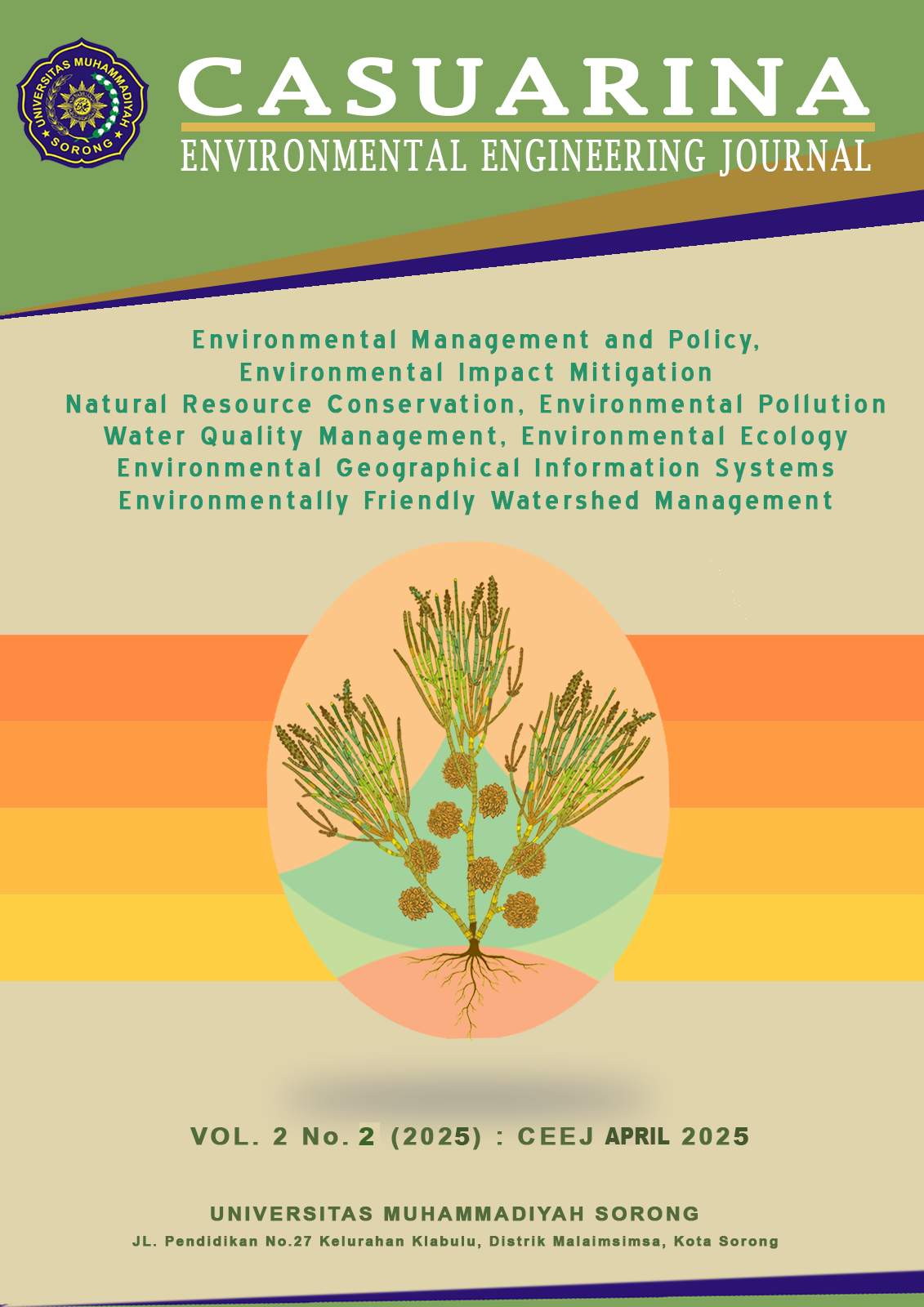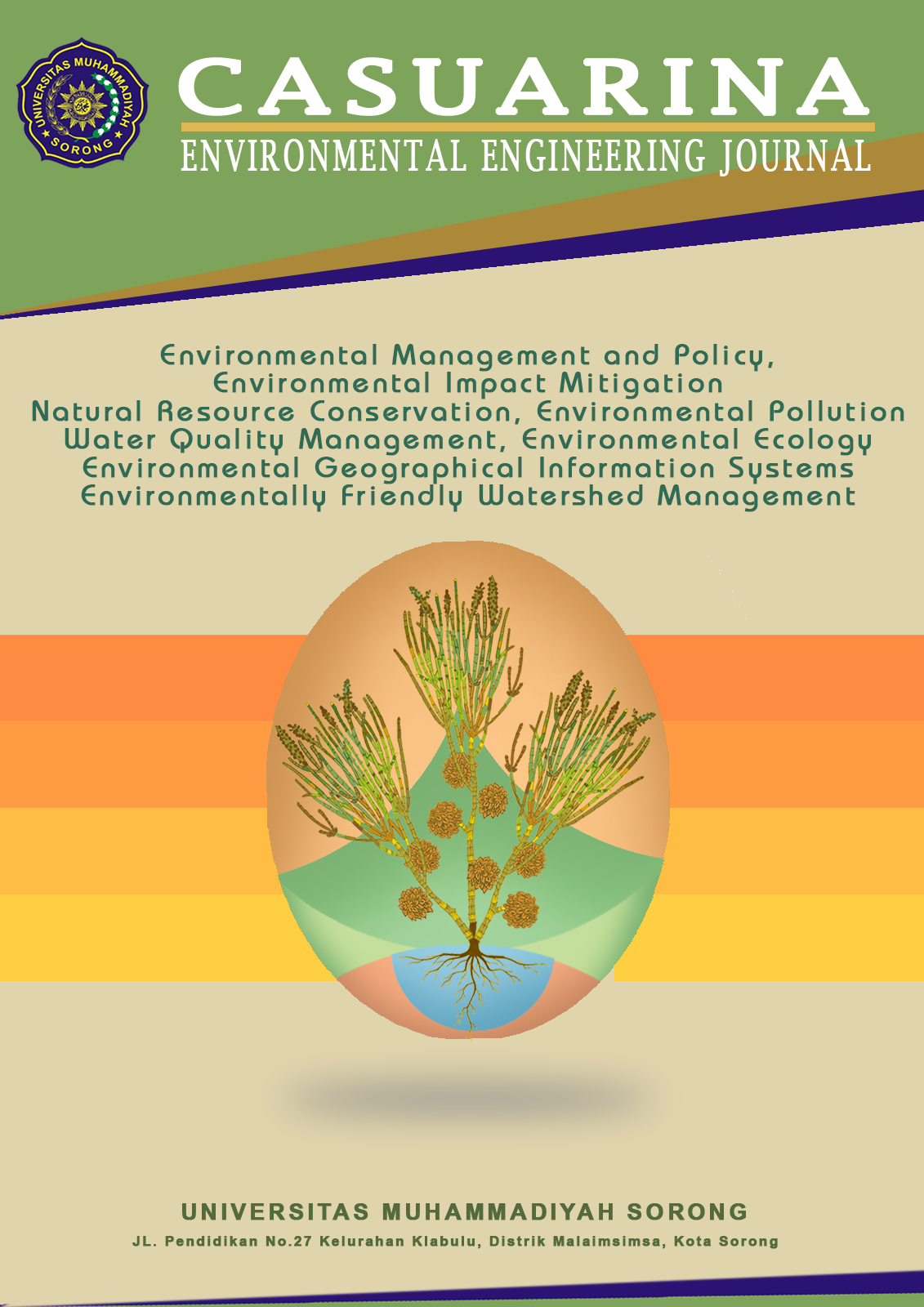PEMBUATAN ALAT KOMPOSTER DAN TAKAKURA UNTUK MENGOLAH SAMPAH ORGANIK
Metode Pengelolaan Sampah Organik
DOI:
https://doi.org/10.33506/ceej.v2i2.4348Kata Kunci:
Kompos, Komposter, Pengomposan Aerobik, Sampah Organik, TakakuraAbstrak
Pengelolaan sampah organik merupakan salah satu tantangan lingkungan yang memerlukan solusi
praktis dan ramah lingkungan. Penelitian ini bertujuan untuk merancang dan membuat alat
pengelolaan sampah organik berupa komposter dan Takakura menggunakan metode
eksperimental. Alat komposter dirancang untuk mendukung proses pengomposan aerob dengan
ventilasi udara, sementara Takakura dilengkapi dengan bantalan sabut kelapa dan pelindung
kardus untuk menjaga kelembapan dan sirkulasi udara. Proses pembuatan dilakukan menggunakan bahan sederhana dan peralatan yang mudah diakses, menjadikan kedua alat ini praktis untuk diaplikasikan di skala rumah tangga. Hasil pengujian menunjukkan bahwa kedua alat efektif mengolah sampah organik menjadi pupuk kompos yang kaya nutrisi, ramah lingkungan, dan berpotensi mendukung pertanian berkelanjutan. Penelitian ini menyimpulkan bahwa penggunaan alat komposter dan Takakura dapat menjadi solusi efektif untuk mengurangi volume sampah organik yang berakhir di tempat pembuangan akhir (TPA), sekaligus meningkatkan kesadaran masyarakat tentang pentingnya pengelolaan limbah yang berkelanjutan. Alat ini diharapkan mampu mendorong pengelolaan sampah yang lebih baik dan berkontribusi pada terciptanya lingkungan yang bersih dan sehat.
Referensi
[1] Moerdjoko S, Widyatmoko, 2002, Menghindari, mengolah dan menyingkirkan sampah,Cet.1,
PT. Dinastindo Adiperkasa Internasional, Jakarta.
[2] Dewi, Y. S., & Treesnowati. (2012). Pengolahan Sampah Skala Rumah Tangga Menggunakan Metode Komposting. Jurnal Ilmiah Fakultas Teknik LIMIT'SVol. 8 No. 2, 35-48.
[3] Sutedjo, M. M. (2002). Pupuk Dan Cara Penggunaan. Jakarta: Rineka Cipta.
[4] Puspadewi, S., Sutari, W., & Kusumiyati. (2016). Pengaruh konsentrasi pupuk organik cair (POC) dan dosis pupuk N, P, K terhadap pertumbuhan dan hasil tanaman jagung manis(Zeamays L. var Rugosa Bonaf) kultivar Talenta. Jurnal Kultivasi, 15(3), 208–216.
[5] Nur, T., Noor, A. R., & Elma, M. (2016). Pembuatan pupuk organik cair dari sampah organik rumah tangga dengan penambahan bioaktivator EM4 (Effective Microorganisms). Konversi, 5(2), 5–12.
[6] Siboro, E. S., Surya, E., & Herlina, N. (2013). Pembuatan pupuk cair dan biogas dari campuran limbah sayuran. Jurnal Teknik Kimia USU, 2(3), 40–43.
[7] Kesehatan, K. K. (2013). Pembuatan Kompos Takakura. Jakarta: Kementrian Kesehatan Republik Indonesia.
Unduhan
Diterbitkan
Cara Mengutip
Terbitan
Bagian
Lisensi
Hak Cipta (c) 2025 Casuarina: Jurnal Teknik Lingkungan

Artikel ini berlisensiCreative Commons Attribution-NonCommercial-ShareAlike 4.0 International License.
Please find the rights and licenses in Casuarina: Environmental Engineering Journal. By submitting the article/manuscript of the article, the author(s) agree with this policy. No specific document sign-off is required.
1. License
The non-commercial use of the article will be governed by the Creative Commons Attribution license as currently displayed on Creative Commons Attribution-NonCommercial-ShareAlike 4.0 International License.
2. Author(s)' Warranties
The author warrants that the article is original, written by the stated author(s), has not been published before, contains no unlawful statements, does not infringe the rights of others, is subject to copyright that is vested exclusively in the author, and free of any third party rights, and that any necessary written permissions to quote from other sources have been obtained by the author(s).
3. User/Public Rights
Casuarina: Environmental Engineering Journal's spirit is to disseminate articles published are as free as possible. Under the Creative Commons license, Casuarina: Environmental Engineering Journal permits users to copy, distribute, display, and perform the work for non-commercial purposes only. Users will also need to attribute authors and Casuarina: Environmental Engineering Journal on distributing works in the journal and other media of publications. Unless otherwise stated, the authors are public entities as soon as their articles got published.
4. Rights of Authors
Authors retain all their rights to the published works, such as (but not limited to) the following rights;
- Copyright and other proprietary rights relating to the article, such as patent rights,
- The right to use the substance of the article in own future works, including lectures and books,
- The right to reproduce the article for own purposes,
- The right to self-archive the article (please read our deposit policy),
- The right to enter into separate, additional contractual arrangements for the non-exclusive distribution of the article's published version (e.g., post it to an institutional repository or publish it in a book), with an acknowledgment of its initial publication in this journal (Casuarina: Environmental Engineering Journal).
5. Co-Authorship
If the article was jointly prepared by more than one author, any authors submitting the manuscript warrants that he/she has been authorized by all co-authors to be agreed on this copyright and license notice (agreement) on their behalf, and agrees to inform his/her co-authors of the terms of this policy. Sentralisasi will not be held liable for anything that may arise due to the author(s) internal dispute. Sentralisasi will only communicate with the corresponding author.
6. Royalties
Being an open accessed journal and disseminating articles for free under the Creative Commons license term mentioned, author(s) aware that Casuarina: Environmental Engineering Journal entitles the author(s) to no royalties or other fees.
7. Miscellaneous
Casuarina: Environmental Engineering Journal will publish the article (or have it published) in the journal if the article editorial process is successfully completed. Casuarina: Environmental Engineering Journal's editors may modify the article to a style of punctuation, spelling, capitalization, referencing, and usage that deems appropriate. The author acknowledges that the article may be published so that it will be publicly accessible and such access will be free of charge for the readers as mentioned in point 3.








